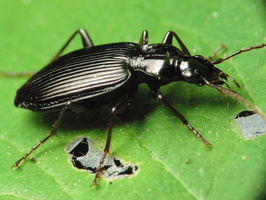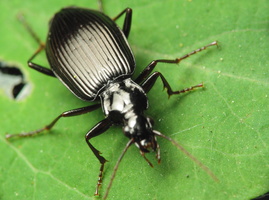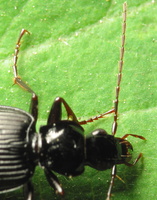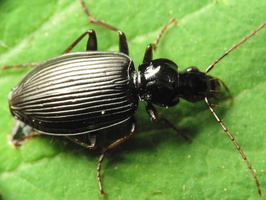- sort orderDefault
Photo title, A → Z
Photo title, Z → A
✔ Date created, new → old
Date created, old → new
Date posted, new → old
Date posted, old → new
Visits, high → low
Random
 home / Insecta · vabzdžiai / Coleoptera · vabalai / Carabidae · žygiai / Platynus assimilis · paprastasis juodžygis
home / Insecta · vabzdžiai / Coleoptera · vabalai / Carabidae · žygiai / Platynus assimilis · paprastasis juodžygis

Platynus assimilis · paprastasis juodžygis
- Limodromus assimilis, Agonum assimilis
- Schwarzer Putzläufer
- Pynteløber, Skovkvikløber
- paprastasis juodžygis
- ukbeetles.co.uk/limodromus-assimilis
- naturespot.org.uk/species/platynus-assimilis
- en.wikipedia.org/wiki/Platynus_assimilis
It is generally common throughout the Palaearctic region from northern Spain through Europe, Asia Minor and Russia to China, Japan and Korea, extending north into central Fennoscandia. Typical habitats are permanently damp or wet woodland, especially near water and, at least on the continent, especially in shaded and cooler situations with abundant alder (Alnus glutinosa), willow (Salix) or ash (Fraxinus excelsior), they also occur, though less frequently, in coniferous woodland and have been recorded up to 1500m altitude in Europe. Adults occur year-round and are mostly nocturnal; they live for up to 3 years and may breed for several seasons, they overwinter under bark or among litter and tussocks etc, often in small aggregations, are active from the first mild days of January or February and by March, when they often form larger aggregations, they are generally common. Breeding occurs from April until the middle of June and larvae develop rapidly and without a diapause into July or August, they pupate in the ground and new-generation adults appear in the autumn. Adults may diapause in the warmest part of the summer and become inactive during colder winter spells but may otherwise be active throughout the year. Wing development is variable but most specimens are fully winged although they rarely fly and their flight is weak, conversely they can run and climb trees rapidly and this is probably their primary method of dispersion.
Adults are medium sized carabids, 9.0-12.5mm, entirely unmetallic black or with the appendages variously dark brown, they may be recognized in the field by the size, the transverse and sinuate pronotum and broadly-oval elytra. Head elongate with large convex eyes and smoothly convex vertex; in Platynus livens the vertex is transversely depressed behind the eyes, antennae pubescent from the fourth segment and the inner margin of each eye with two setiferous punctures. Mandibles sharp and symmetrical, without a pore on the outer surface, penultimate segment of labial palps with only one or two internal setae, last segment of maxillary palps long and rounded apically. Pronotum widest in front of the middle and contracted and sinuate to raised and slightly protruding posterior angles, lateral margins widely explanate and strongly raised, basal margin finely bordered throughout, basal fovea long and oblique and median longitudinal depression stronger towards the base. Elytra wide with rounded shoulders and a complete basal border, laterally curved and sinuate before produced apical margins, striae well impressed and finely punctured, interstices convex and with fine transverse microsculpture; the third with three large punctured which may join the adjacent striae. Legs long and slender, front tibiae gradually and only weakly broadened to the apex, with a subapical antenna-cleaning notch and a single small spur at the inner apical angle. Tarsi glabrous and lacking longitudinal grooves, claws smooth internally.



